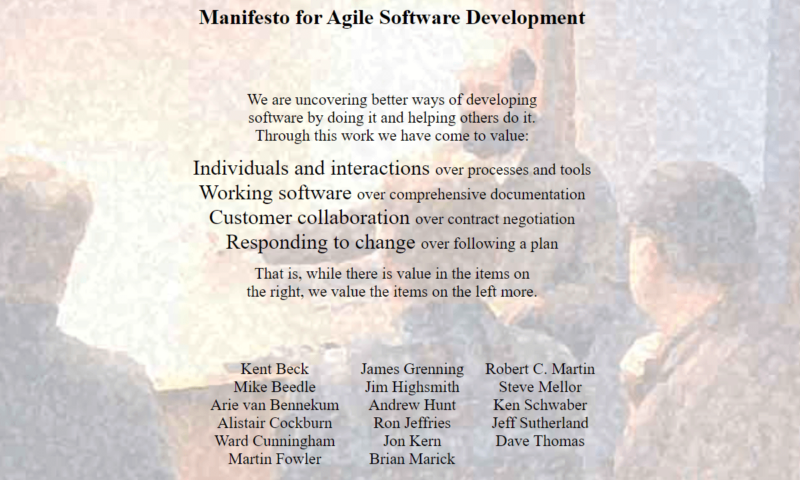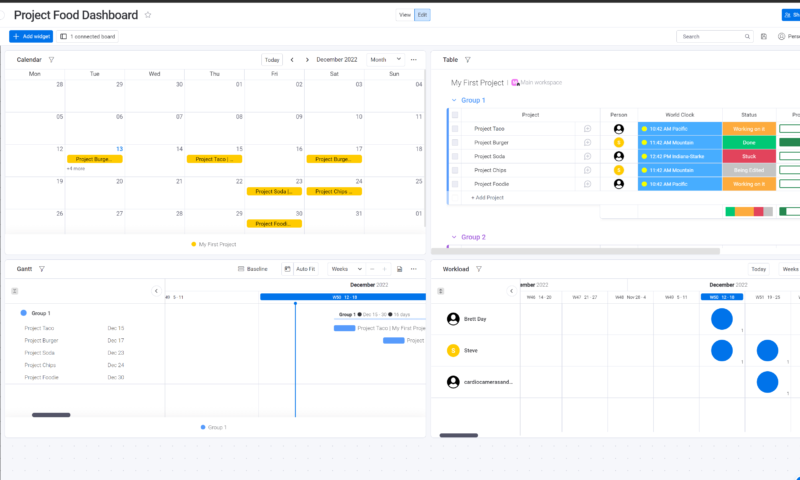- The Agile Iron Triangle is a redefined version of the Traditional Iron Triangle, which was developed for rigid project management methodologies like Waterfall and the critical path method.
- There are three main components to the Agile Iron Triangle: value (customer value), quality (product quality) and constraints (project scopes, budgets and timelines).
- The Agile Iron Triangle is popular with software development teams, but many Agile teams and project managers in manufacturing industries also use it to help teams make important decisions.
Facts & Expert Analysis About Agile Iron Triangle:
- Iron Triangle development: The Traditional Iron Triangle was developed by Dr. Martin Barnes in 1969. The original triangle, which was used to aid product development, determined that project scopes are fixed, but timing and cost could vary.
- Agile development: In the early 2000s, the Agile movement began to explode. As a result, the Agile Iron Triangle was developed. The Agile Triangle differs from the original in that all areas of a project — including the original scope (constraints) — can be altered to meet changing markets and new customer demands.
- Use cases: Though it’s predominantly used in software development, operations and manufacturing, Agile teams can use the Agile Iron Triangle in many industries. If you need help making key decisions that can impact customer satisfaction and product quality, the Agile Triangle is for you.
Leaders of Agile projects must ensure that projects deliver the requested product while meeting deadlines and budgets. However, managing these constraints can be tricky. Fortunately, an old technique has been revamped to produce a method — the Agile Iron Triangle — that can help leaders succeed, especially when it’s used alongside the best project management software.
Here, we’ll discuss the Agile Iron Triangle and explain how it can help increase customer value and product quality while balancing constraints. You’ll see how the method differs from the Iron Triangle, which was developed for traditional project management methodologies like Waterfall. We’ll also cover the Agile Triangle’s key components and give examples of the triangle in use. Let’s dive in.
Show allLearn more about our editorial team and our research process.
What Is the Agile Iron Triangle?
The Agile Iron Triangle helps Agile teams find a balance between delivering value, producing quality products and managing constraints (a project’s scope, cost and schedule), all of which increase customer satisfaction. This starkly contrasts the Traditional Iron Triangle, which only focuses on time, scope and cost, placing quality above customer satisfaction.

The shift in focus from ensuring quality and meeting strict scopes to delivering value and customer satisfaction aligns with the principles and guidelines that the Agile Alliance outlined in the Agile Manifesto. While the original Iron Triangle helped teams complete structured projects, the Agile Iron Triangle helps project managers successfully deliver ever-changing Agile projects.
The Agile Iron Triangle vs the Traditional Iron Triangle
Now that we know why the Traditional Iron Triangle had to be modified to work with the Agile methodology, it’s time to examine the differences between the two triangles.
The Agile Iron TriangleThe Agile project management triangle was developed to help project teams navigate the Agile software development process. The Agile Iron Triangle focuses on value, quality and constraints as a way to track product development. In addition to focusing on these three areas, the triangle also accounts for collaboration between software developers and stakeholders.
The Agile Iron Triangle is broken down into three areas: value, quality and constraints. These three focus areas coincide with Agile’s belief that Agile projects should be adaptable and put the customer first. Below, we’ll look at each of the three components.
- Value: The value portion of the triangle relates to stakeholder and client expectations, such as what they want, when they want it and how much it will cost. Agile frameworks, like Scrum, embrace feedback from stakeholders and clients to measure success. While listening to the client’s feelings about the product and project can be challenging, it will help leaders determine if they’re on the right path.
- Quality: The quality aspect focuses on the quality of the deliverable. Sprint reviews are held so that the latest product iteration can be demoed to stakeholders and clients. During these meetings, which ensure better collaboration, clients can determine if the product quality is sufficient for that stage of development.
- Constraints: The constraints section centers on traditional methods (scheduling, scope and cost). These can help when measuring success. Due to the flexible nature of Agile projects, the constraints portion of the Agile Iron Triangle doesn’t get as much attention as the value and quality aspects. However, constraints are still important indicators of project success.
Each Agile team member plays an important role in the use of the Agile Iron Triangle. The key players are as follows:
- The product owner (PO): The product owner is responsible for the project’s vision and defines the value in the Agile Iron Triangle. By prioritizing key features through backlog refinement, the PO can ensure customer value.
- The Scrum Master: The Scrum Master manages the quality aspect of the triangle. They guide the team, lead daily meetings and retrospectives, and ensure that key Agile principles are followed.
- Development teams: Along with the PO, the development team works to keep the constraints portion of the triangle in check. The dev team must closely monitor the scope, timeline and resources, while also being aware of the customer value and quality aspects. They can achieve this by receiving customer feedback and collaborating with key stakeholders and clients.
After software development evolved thanks to Agile principles and guidelines, traditional project management and the Traditional Iron Triangle took a back seat. Still, many continue to complete projects using traditional methods, like the Waterfall approach, the critical path method, critical chain project management and others.
The traditional version of the triangle focuses on three areas: scope, schedule and cost. Project managers, clients and stakeholders have used these three areas of project constraints for years to determine whether a project was a financial success and whether customer expectations were met.
Below, we’ll explore the Traditional Iron Triangle’s constraints in more detail so you can better understand how each area helps determine project success. Remember that these constraints also make up part of the Agile Iron Triangle.
- Cost: The triangle’s cost component refers to the budgets set for the project based on the original scope and business goals. Many factors, including resources, timelines, scope changes and more, can determine whether a budget is increased or decreased during a project’s lifecycle.
- Scope: The project scope is determined before a project starts and outlines the who, what, when, where and why elements. Scopes can cover two areas: product scope, which explains what the product must feature or do, and project scope, which covers the project management methodology, the processes that should be followed, the budgets and the project timelines.
- Schedule: A project manager is tasked with creating project timelines and milestones with stakeholders, clients and the entire project team. It’s important to remember that changing schedules once a project begins will impact project costs and the entire project scope. If the project isn’t managed correctly, it could lead to scope creep.
While the Agile Iron Triangle’s overall goal is to help deliver customer value and satisfaction, the Traditional Iron Triangle aims to help ensure product quality. By making sure that budgets are followed, schedules are met and scopes stay within predetermined boundaries, the quality of the product can be secured.
The Agile Triangle’s Role in Software and Product Development
The Agile Iron Triangle may sound a little complex on paper. However, applying the method is relatively straightforward, especially during Agile software development projects — where a software team aims for continuous delivery of product iterations — and in product development projects. Below, we’ll look at examples of the Agile Iron Triangle in each project type.
The Agile Iron Triangle in Software Development
During a software development project, the entire project team can use the Agile Iron Triangle to help decide if a feature can deliver on all three key triangle components (value, quality and constraints).

When a new feature is requested during a review, the PO discusses whether it would offer value to the customer. If they decide that it would, the PO and the development team determine the quality of the feature. Finally, if the team believes that the feature offers value and that quality requirements can be met, they can alter the scope constraints to accommodate the feature.
Agile Iron Triangle Product (Manufacturing) Development Example
The Agile Iron Triangle can help project leaders manage constraints during manufacturing projects. For example, the project scope (constraints) — which is determined before a project begins — may have to be altered to accommodate a new market regulation that forces a manufacturer to revisit how a product is made or operated.
In this example, the project budget may need to increase so that the product changes can occur. The budget change will then impact the scheduling and the resources required.
The beauty of Agile methods lies in their ability to adapt. If this happened in traditional projects, the risk of scope creep would increase. However, Agile leaders can work with clients and stakeholders to adjust budgets to maintain value. They can also work with their team to see if they can do extra work (scheduling/constraints) to ensure that value and quality remain high.
Final Thoughts
The Agile Iron Triangle isn’t perfect, but it’s a friendlier model for Agile teams than the original model, which was designed for rigid traditional project management methods. Teams can use the Agile Iron Triangle to help ensure that important project decisions retain or increase customer value and product quality, and meet existing or updated project constraints.
Are you an Agile project manager or Scrum Master who has used the Agile Iron Triangle to help guide or influence your team in making decisions? Do you find that the model works well in software development? Are there any other project management concepts you’d like us to cover? Let us know in the comments. Thanks for reading.
FAQ: Agile Triangle vs Iron Triangle
- What Is an Agile Iron Triangle?
The Agile Iron Triangle is a concept that Agile teams can use to help them make sound decisions about customer value, product quality and project scopes.
- What Is the Agile Triangle Model?
The Agile Iron Triangle model is a method that Agile project managers can use when making decisions that impact customer value, product quality and constraints like budgets and timelines. This method helps increase customer value and product quality.
- What Is the Iron Triangle Methodology?
The Iron Triangle methodology is an older version of the Agile Triangle that was designed to work with traditional methodologies like Waterfall. The original Iron Triangle focuses on project costs, scheduling, scopes and favored outcomes that ensure quality.
- What Is the Triangle of Responsibility in Agile?
The Triangle of Responsibility isn’t related to the Agile Iron Triangle, but instead refers to a set of excuses used to relinquish responsibility.
The post Agile Iron Triangle: Project Management Definition and Examples in 2024 appeared first on Cloudwards.
 5 days ago
11
5 days ago
11
